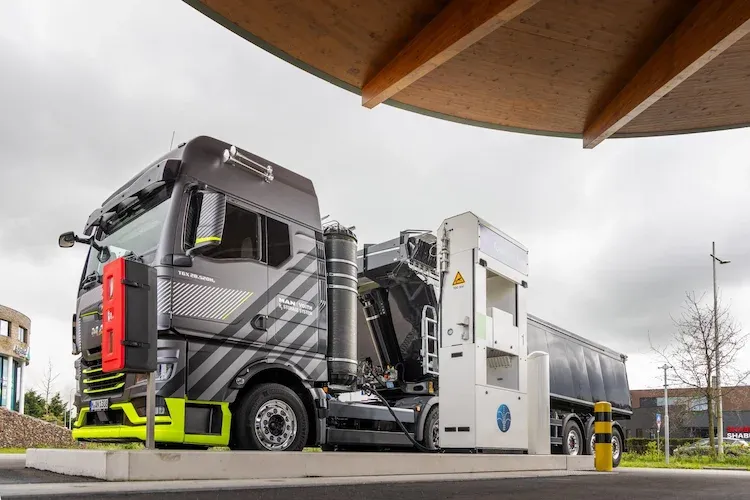Driving on hydrogen is an alternative to driving on a battery. The new Subsidy Scheme for Hydrogen in Mobility (SWIM) makes it more interesting for filling stations and carriers to invest in hydrogen. Entrepreneurs can apply for the subsidy starting July 15.

Ending chicken-egg discussion
To make a hydrogen refueling station profitable, an average of 10 to 15 hydrogen trucks are needed. The new SWIM scheme makes EUR 22 million available for this purpose in 2024. The scheme is also expected to open in the coming years.
In the application, entrepreneurs must include at least one hydrogen refueling station and several trucks or (delivery) vans. This puts an end to the chicken-and-egg discussion: Whether you build hydrogen refueling stations first so you can refuel. Or whether you first need vehicles to make the fueling station profitable.
In addition, there is no need for participating parties to refuel only at "their own" hydrogen refueling station. Rather, the scheme should ensure that refueling will increase at both new and existing filling stations.
Promising alternative
.Hydrogen driving, alongside battery-electric vehicles, is a promising alternative for clean driving. The technology is particularly interesting for heavy transport. Hydrogen vehicles have a long range and do not involve long charging times and fewer problems with the power grid.
Executive Minister Harbers of the Ministry of Infrastructure and Water Management said, "Hydrogen can really start to break through. The promise of hydrogen has been there for years. Especially for entrepreneurs who want to drive cleanly over longer distances with a heavier car, for example a truck, hydrogen can be ideal. But then there have to be refueling stations and plenty of choices for business owners. It's time to make sure hydrogen delivers on its promise."
Minimum of 30 hydrogen refueling stations
.The goal of the SWIM is to work toward a nationwide network of hydrogen refueling stations. There are currently 21 hydrogen refueling stations in the Netherlands, not all of which are suitable for heavy road transport. In the EU it has been agreed that by 2030 hydrogen filling stations can be found along all main European freeways. For our country, there should be at least 30, spread throughout the country.